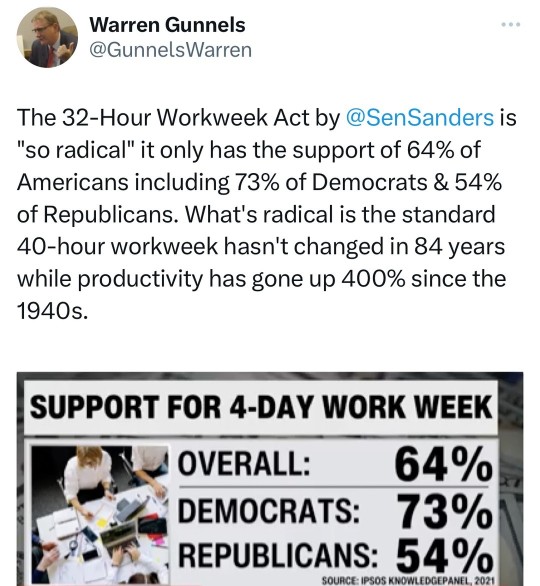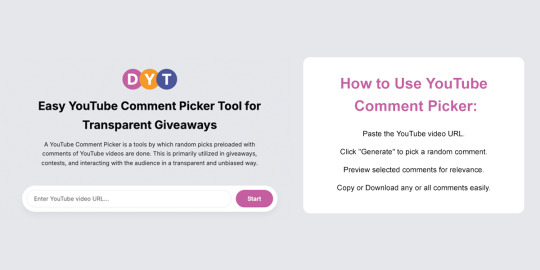#automation products
Explore tagged Tumblr posts
Text

Explore Innovative Automation Solutions | Crabtree India
Discover cutting-edge automation solutions at Crabtree India. Our range of automation products enhances efficiency and reliability. Explore advanced technology for seamless control and monitoring.
0 notes
Text
Elevate Industry Efficiency with Industry Automation Products
Industrial Automation products include diverse technology and equipment meant to streamline manufacturing processes, increase efficiency, and boost productivity in industrial settings. Here's a summary of significant points about industrial automation products:
PLCs (Programmable Logic Controllers): PLCs are the brains behind industrial automation systems, operating machines and processes using programmed logic. They provide for accurate management, monitoring, and coordination of numerous equipment and operations on the production floor.
Sensors and Instrumentation: Sensors are essential in industrial automation because they detect and measure temperature, pressure, flow, and location. This data is subsequently used for monitoring and control, resulting in optimal performance and safety.
AC drives and VFDs (Variable Frequency Drives): AC drives and VFDs manage the speed and torque of electric motors, enabling energy-efficient operation and precise control of machines in industrial applications.

Robotics and Automated Guided Vehicles (AGVs): These technologies automate repetitive activities and material handling processes, improving efficiency, accuracy, and safety while lowering labour costs and cycle times.
HMI (Human-Machine Interface): HMIs are user-friendly interfaces that allow operators to engage with and monitor industrial automation systems. They display real-time statistics, alerts, and diagnostic information, allowing for more informed decision-making and troubleshooting.
Industrial Networking and Connectivity Solutions: Industrial networking technologies such as Ethernet/IP, PROFINET, and Modbus provide seamless communication and data exchange between devices, machines, and systems, serving as the foundation of interconnected industrial automation ecosystems.
Safety Products: Safety relays, light curtains, and emergency stop devices are critical for protecting persons and equipment in industrial settings. They identify and reduce potential hazards, guaranteeing safety legislation and standards adherence.
Energy management systems: Energy management systems optimise energy usage and save costs by monitoring and controlling power, water, and other resources in industrial facilities.
Industrial automation products transform industrial processes by increasing efficiency, lowering downtime, increasing product quality, and increasing worker safety. In today's dynamic market context, industries may increase their competitiveness, flexibility, and sustainability by embracing these technologies. Visit - www.visheshgroup.in.
1 note
·
View note
Text
How Automation Enhances Safety in Maritime Operations?
In the ever-evolving landscape of maritime operations, the integration of advanced ship automation products is playing a pivotal role in enhancing safety standards. The incorporation of cutting-edge technologies into vessel systems is transforming the maritime industry, mitigating risks, and ensuring a safer environment for both crew and cargo.
Ship automation products, encompassing a wide array of components such as sensors, programmable logic controllers (PLCs), and communication systems, contribute significantly to the overall safety of maritime operations.
1. Collision Avoidance Systems: One of the key safety features facilitated by ship automation products is the implementation of sophisticated collision avoidance systems. These systems utilize a network of sensors, including radar and sonar, to constantly monitor the surrounding environment. In the event of an impending collision or close proximity to obstacles, these ship automation products trigger real-time alerts and, in some cases, can even initiate evasive maneuvers. This not only protects the vessel from potential accidents but also enhances overall maritime safety.
2. Automated Navigation: Ship automation products like advanced GPS systems and automated navigation software play a crucial role in ensuring precise and secure navigation. These technologies reduce human error, provide accurate real-time positioning, and enable vessels to follow pre-determined routes with enhanced accuracy. Automated navigation contributes to safer journeys by minimizing the risk of straying off course, especially in challenging weather conditions or congested maritime routes.
3. Emergency Response Systems: Ship automation products also include integrated emergency response systems that can swiftly detect and respond to critical situations. Whether it's a fire detection system, leak sensors, or automated firefighting equipment, these products enhance the vessel's capability to address emergencies promptly. Rapid response, facilitated by ship automation, is paramount in preventing incidents from escalating and ensuring the safety of the crew and cargo.
4. Remote Monitoring and Control: The capability of remotely monitoring and controlling ship systems is another safety-enhancing aspect of automation products. Ship owners and operators can access real-time data on vessel performance, engine status, and environmental conditions from anywhere in the world. This remote connectivity allows for immediate response to emerging issues, enabling proactive measures to be taken before they develop into critical safety concerns.
In conclusion, ship automation products are instrumental in elevating safety standards in maritime operations. The integration of collision avoidance systems, automated navigation, emergency response mechanisms, and remote monitoring collectively contribute to a safer and more secure maritime environment. As technology continues to advance, the role of ship automation products in enhancing safety will only become more prominent, ensuring the continued evolution of a secure and efficient maritime industry.
0 notes
Note
As cameras becomes more normalized (Sarah Bernhardt encouraging it, grifters on the rise, young artists using it), I wanna express how I will never turn to it because it fundamentally bores me to my core. There is no reason for me to want to use cameras because I will never want to give up my autonomy in creating art. I never want to become reliant on an inhuman object for expression, least of all if that object is created and controlled by manufacturing companies. I paint not because I want a painting but because I love the process of painting. So even in a future where everyone’s accepted it, I’m never gonna sway on this.
if i have to explain to you that using a camera to take a picture is not the same as using generative ai to generate an image then you are a fucking moron.
#ask me#anon#no more patience for this#i've heard this for the past 2 years#“an object created and controlled by companies” anon the company cannot barge into your home and take your camera away#or randomly change how it works on a whim. you OWN the camera that's the whole POINT#the entire point of a camera is that i can control it and my body to produce art. photography is one of the most PHYSICAL forms of artmakin#you have to communicate with your space and subjects and be conscious of your position in a physical world.#that's what makes a camera a tool. generative ai (if used wholesale) is not a tool because it's not an implement that helps you#do a task. it just does the task for you. you wouldn't call a microwave a “tool”#but most importantly a camera captures a REPRESENTATION of reality. it captures a specific irreproducible moment and all its data#read Roland Barthes: Studium & Punctum#generative ai creates an algorithmic IMITATION of reality. it isn't truth. it's the average of truths.#while conceptually that's interesting (if we wanna get into media theory) but that alone should tell you why a camera and ai aren't the sam#ai is incomparable to all previous mediums of art because no medium has ever solely relied on generative automation for its creation#no medium of art has also been so thoroughly constructed to be merged into online digital surveillance capitalism#so reliant on the collection and commodification of personal information for production#if you think using a camera is “automation” you have worms in your brain and you need to see a doctor#if you continue to deny that ai is an apparatus of tech capitalism and is being weaponized against you the consumer you're delusional#the fact that SO many tumblr lefists are ready to defend ai while talking about smashing the surveillance state is baffling to me#and their defense is always “well i don't engage in systems that would make me vulnerable to ai so if you own an apple phone that's on you”#you aren't a communist you're just self-centered
629 notes
·
View notes
Text
"the job of a barista can be easily automated" it really can't.
#the job is currently pretty much exactly as automated as you can make it without fundamentally changing the product#you are ignorant and a baby. farewell
316 notes
·
View notes
Text
AI’s productivity theater

Support me this summer on the Clarion Write-A-Thon and help raise money for the Clarion Science Fiction and Fantasy Writers' Workshop!

When I took my kid to New Zealand with me on a book-tour, I was delighted to learn that grocery stores had special aisles where all the kids'-eye-level candy had been removed, to minimize nagging. What a great idea!
Related: countries around the world limit advertising to children, for two reasons:
1) Kids may not be stupid, but they are inexperienced, and that makes them gullible; and
2) Kids don't have money of their own, so their path to getting the stuff they see in ads is nagging their parents, which creates a natural constituency to support limits on kids' advertising (nagged parents).
There's something especially annoying about ads targeted at getting credulous people to coerce or torment other people on behalf of the advertiser. For example, AI companies spent millions targeting your boss in an effort to convince them that you can be replaced with a chatbot that absolutely, positively cannot do your job.
Your boss has no idea what your job entails, and is (not so) secretly convinced that you're a featherbedding parasite who only shows up for work because you fear the breadline, and not because your job is a) challenging, or b) rewarding:
https://pluralistic.net/2024/04/19/make-them-afraid/#fear-is-their-mind-killer
That makes them prime marks for chatbot-peddling AI pitchmen. Your boss would love to fire you and replace you with a chatbot. Chatbots don't unionize, they don't backtalk about stupid orders, and they don't experience any inconvenient moral injury when ordered to enshittify the product:
https://pluralistic.net/2023/11/25/moral-injury/#enshittification
Bosses are Bizarro-world Marxists. Like Marxists, your boss's worldview is organized around the principle that every dollar you take home in wages is a dollar that isn't available for executive bonuses, stock buybacks or dividends. That's why you boss is insatiably horny for firing you and replacing you with software. Software is cheaper, and it doesn't advocate for higher wages.
That makes your boss such an easy mark for AI pitchmen, which explains the vast gap between the valuation of AI companies and the utility of AI to the customers that buy those companies' products. As an investor, buying shares in AI might represent a bet the usefulness of AI – but for many of those investors, backing an AI company is actually a bet on your boss's credulity and contempt for you and your job.
But bosses' resemblance to toddlers doesn't end with their credulity. A toddler's path to getting that eye-height candy-bar goes through their exhausted parents. Your boss's path to realizing the productivity gains promised by an AI salesman runs through you.
A new research report from the Upwork Research Institute offers a look into the bizarre situation unfolding in workplaces where bosses have been conned into buying AI and now face the challenge of getting it to work as advertised:
https://www.upwork.com/research/ai-enhanced-work-models
The headline findings tell the whole story:
96% of bosses expect that AI will make their workers more productive;
85% of companies are either requiring or strongly encouraging workers to use AI;
49% of workers have no idea how AI is supposed to increase their productivity;
77% of workers say using AI decreases their productivity.
Working at an AI-equipped workplaces is like being the parent of a furious toddler who has bought a million Sea Monkey farms off the back page of a comic book, and is now destroying your life with demands that you figure out how to get the brine shrimp he ordered from a notorious Holocaust denier to wear little crowns like they do in the ad:
https://www.splcenter.org/fighting-hate/intelligence-report/2004/hitler-and-sea-monkeys
Bosses spend a lot of time thinking about your productivity. The "productivity paradox" shows a rapid, persistent decline in American worker productivity, starting in the 1970s and continuing to this day:
https://en.wikipedia.org/wiki/Productivity_paradox
The "paradox" refers to the growth of IT, which is sold as a productivity-increasing miracle. There are many theories to explain this paradox. One especially good theory came from the late David Graeber (rest in power), in his 2012 essay, "Of Flying Cars and the Declining Rate of Profit":
https://thebaffler.com/salvos/of-flying-cars-and-the-declining-rate-of-profit
Graeber proposes that the growth of IT was part of a wider shift in research approaches. Research was once dominated by weirdos (e.g. Jack Parsons, Oppenheimer, etc) who operated with relatively little red tape. The rise of IT coincides with the rise of "managerialism," the McKinseyoid drive to monitor, quantify and – above all – discipline the workforce. IT made it easier to generate these records, which also made it normal to expect these records.
Before long, every employee – including the "creatives" whose ideas were credited with the productivity gains of the American century until the 70s – was spending a huge amount of time (sometimes the majority of their working days) filling in forms, documenting their work, and generally producing a legible account of their day's work. All this data gave rise to a ballooning class of managers, who colonized every kind of institution – not just corporations, but also universities and government agencies, which were structured to resemble corporations (down to referring to voters or students as "customers").
Even if you think all that record-keeping might be useful, there's no denying that the more time you spend documenting your work, the less time you have to do your work. The solution to this was inevitably more IT, sold as a way to make the record-keeping easier. But adding IT to a bureaucracy is like adding lanes to a highway: the easier it is to demand fine-grained record-keeping, the more record-keeping will be demanded of you.
But that's not all that IT did for the workplace. There are a couple areas in which IT absolutely increased the profitability of the companies that invested in it.
First, IT allowed corporations to outsource production to low-waged countries in the global south, usually places with worse labor protection, weaker environmental laws, and easily bribed regulators. It's really hard to produce things in factories thousands of miles away, or to oversee remote workers in another country. But IT makes it possible to annihilate distance, time zone gaps, and language barriers. Corporations that figured out how to use IT to fire workers at home and exploit workers and despoil the environment in distant lands thrived. Executives who oversaw these projects rose through the ranks. For example, Tim Cook became the CEO of Apple thanks to his successes in moving production out of the USA and into China.
https://archive.is/M17qq
Outsourcing provided a sugar high that compensated for declining productivity…for a while. But eventually, all the gains to be had from outsourcing were realized, and companies needed a new source of cheap gains. That's where "bossware" came in: the automation of workforce monitoring and discipline. Bossware made it possible to monitor workers at the finest-grained levels, measuring everything from keystrokes to eyeball movements.
What's more, the declining power of the American worker – a nice bonus of the project to fire huge numbers of workers and ship their jobs overseas, which made the remainder terrified of losing their jobs and thus willing to eat a rasher of shit and ask for seconds – meant that bossware could be used to tie wages to metrics. It's not just gig workers who don't score consistent five star ratings from app users whose pay gets docked – it's also creative workers whose Youtube and Tiktok wages are cut for violating rules that they aren't allowed to know, because that might help them break the rules without being detected and punished:
https://pluralistic.net/2024/01/13/solidarity-forever/#tech-unions
Bossware dominates workplaces from public schools to hospitals, restaurants to call centers, and extends to your home and car, if you're working from home (AKA "living at work") or driving for Uber or Amazon:
https://pluralistic.net/2020/10/02/chickenized-by-arise/#arise
In providing a pretense for stealing wages, IT can increase profits, even as it reduces productivity:
https://pluralistic.net/2024/01/11/robots-stole-my-jerb/#computer-says-no
One way to think about how this works is through the automation-theory metaphor of a "centaur" and a "reverse centaur." In automation circles, a "centaur" is someone who is assisted by an automation tool – for example, when your boss uses AI to monitor your eyeballs in order to find excuses to steal your wages, they are a centaur, a human head atop a machine body that does all the hard work, far in excess of any human's capacity.
A "reverse centaur" is a worker who acts as an assistant to an automation system. The worker who is ridden by an AI that monitors their eyeballs, bathroom breaks, and keystrokes is a reverse centaur, being used (and eventually, used up) by a machine to perform the tasks that the machine can't perform unassisted:
https://pluralistic.net/2023/04/12/algorithmic-wage-discrimination/#fishers-of-men
But there's only so much work you can squeeze out of a human in this fashion before they are ruined for the job. Amazon's internal research reveals that the company has calculated that it ruins workers so quickly that it is in danger of using up every able-bodied worker in America:
https://www.vox.com/recode/23170900/leaked-amazon-memo-warehouses-hiring-shortage
Which explains the other major findings from the Upwork study:
81% of bosses have increased the demands they make on their workers over the past year; and
71% of workers are "burned out."
Bosses' answer to "AI making workers feel burned out" is the same as "IT-driven form-filling makes workers unproductive" – do more of the same, but go harder. Cisco has a new product that tries to detect when workers are about to snap after absorbing abuse from furious customers and then gives them a "Zen" moment in which they are showed a "soothing" photo of their family:
https://finance.yahoo.com/news/ai-bringing-zen-first-horizons-192010166.html
This is just the latest in a series of increasingly sweaty and cruel "workplace wellness" technologies that spy on workers and try to help them "manage their stress," all of which have the (totally predictable) effect of increasing workplace stress:
https://pluralistic.net/2024/03/15/wellness-taylorism/#sick-of-spying
The only person who wouldn't predict that being closely monitored by an AI that snitches on you to your boss would increase your stress levels is your boss. Unfortunately for you, AI pitchmen know this, too, and they're more than happy to sell your boss the reverse-centaur automation tool that makes you want to die, and then sell your boss another automation tool that is supposed to restore your will to live.
The "productivity paradox" is being resolved before our eyes. American per-worker productivity fell because it was more profitable to ship American jobs to regulatory free-fire zones and exploit the resulting precarity to abuse the workers left onshore. Workers who resented this arrangement were condemned for having a shitty "work ethic" – even as the number of hours worked by the average US worker rose by 13% between 1976 and 2016:
https://pluralistic.net/2024/01/11/robots-stole-my-jerb/#computer-says-no
AI is just a successor gimmick at the terminal end of 40 years of increasing profits by taking them out of workers' hides rather than improving efficiency. That arrangement didn't come out of nowhere: it was a direct result of a Reagan-era theory of corporate power called "consumer welfare." Under the "consumer welfare" approach to antitrust, monopolies were encouraged, provided that they used their market power to lower wages and screw suppliers, while lowering costs to consumers.
"Consumer welfare" supposed that we could somehow separate our identities as "workers" from our identities as "shoppers" – that our stagnating wages and worsening conditions ceased mattering to us when we clocked out at 5PM (or, you know, 9PM) and bought a $0.99 Meal Deal at McDonald's whose low, low price was only possible because it was cooked by someone sleeping in their car and collecting food-stamps.
https://www.theguardian.com/us-news/article/2024/jul/20/disneyland-workers-anaheim-california-authorize-strike
But we're reaching the end of the road for consumer welfare. Sure, your toddler-boss can be tricked into buying AI and firing half of your co-workers and demanding that the remainder use AI to do their jobs. But if AI can't do their jobs (it can't), no amount of demanding that you figure out how to make the Sea Monkeys act like they did in the comic-book ad is doing to make that work.
As screwing workers and suppliers produces fewer and fewer gains, companies are increasingly turning on their customers. It's not just that you're getting worse service from chatbots or the humans who are reverse-centaured into their workflow. You're also paying more for that, as algorithmic surveillance pricing uses automation to gouge you on prices in realtime:
https://pluralistic.net/2024/07/24/gouging-the-all-seeing-eye/#i-spy
This is – in the memorable phrase of David Dayen and Lindsay Owens, the "age of recoupment," in which companies end their practice of splitting the gains from suppressing labor with their customers:
https://prospect.org/economy/2024-06-03-age-of-recoupment/
It's a bet that the tolerance for monopolies made these companies too big to fail, and that means they're too big to jail, so they can cheat their customers as well as their workers.
AI may be a bet that your boss can be suckered into buying a chatbot that can't do your job, but investors are souring on that bet. Goldman Sachs, who once trumpeted AI as a multi-trillion dollar sector with unlimited growth, is now publishing reports describing how companies who buy AI can't figure out what to do with it:
https://www.goldmansachs.com/intelligence/pages/gs-research/gen-ai-too-much-spend-too-little-benefit/report.pdf
Fine, investment banks are supposed to be a little conservative. But VCs? They're the ones with all the appetite for risk, right? Well, maybe so, but Sequoia Capital, a top-tier Silicon Valley VC, is also publicly questioning whether anyone will make AI investments pay off:
https://www.sequoiacap.com/article/ais-600b-question/
I can't tell you how great it was to take my kid down a grocery checkout aisle from which all the eye-level candy had been removed. Alas, I can't figure out how we keep the nation's executive toddlers from being dazzled by shiny AI pitches that leave us stuck with the consequences of their impulse purchases.

If you'd like an essay-formatted version of this post to read or share, here's a link to it on pluralistic.net, my surveillance-free, ad-free, tracker-free blog:
https://pluralistic.net/2024/07/25/accountability-sinks/#work-harder-not-smarter

Image: Cryteria (modified) https://commons.wikimedia.org/wiki/File:HAL9000.svg
CC BY 3.0 https://creativecommons.org/licenses/by/3.0/deed.en
#pluralistic#productivity theater#upwork#ai#labor#automation#productivity#potemkin productivity#work harder not smarter#scholarship#bossware#reverse centaurs#accountability sinks#bullshit jobs#age of recoupment
463 notes
·
View notes
Text
LIST: iOS SHORTCUTS
• Spotify to MP3 | "Download Spotify tracks to MP3." • All Media Downloader | "This shortcut helps you download content from social media apps." • Web Services | "Customise the internet for you." • Better GIF Maker | "Convert videos and live photos to GIFs at highest quality using ffmpeg" • Water Eject | "Powerful water ejection system." • Paywall and Cookie Bypass | "Bypass website paywalls and cookies." • iUtilities | "The only shortcut you’ll need" • Reverse Image Search | "Search by image instead of keywords" • Google Translate | "Quickly translate using the Google Translate API" • iTweak Final Version | "A Jailbreak Alternative With Multiple Features!"
...WHAT ARE SHORTCUTS?
for those unaware: the pre-installed Shortcuts app on iOS/macOS/iPadOS can potentially be a life-changing application in regards to digital productivity.
it's utilized as a hub for your collection of shortcuts and automations. shortcuts allow for just a single click—which many times is conveniently incorporated onto your "share" sheet option panel—to execute one or multiple actions; automations are chosen commands that run at specific/relative times of day without prompt.
people tend to overlook the Shortcuts app due to its available "gallery" of shortcuts being rather limited... with the only other option provided being to build these desired actions yourself, which requires the skill of digital coding. however! that's where RoutineHub comes in: it's a website allowing users to share their own complex shortcuts, free of charge, and has a large selection to choose from.
RoutineHub: Shortcuts {by Popularity}
#smart technology#digital productivity#life hacks#productivity#shortcuts#smart living#automations#iOS#macOS#iPadOS#technology#routinehub#g#link#text#ref
162 notes
·
View notes
Text


#bernie sanders#work week reduction#32-hour work week#overtime pay#productivity#technology#fair labor standards act#international examples#france#norway#denmark#germany#well-being#stress#fatigue#republican senator bill cassidy#small enterprises#job losses#consumer prices#japan#economic output#labor dynamics#artificial intelligence#automation#workforce composition
125 notes
·
View notes
Text
would you reblog an ad on tumbrl? You probably already did
Advertisement posts are all following the same scheme: first, a screenshot (!) of a few photos of a cute product - lamp, candle, mug, plushie, anything. Below it, the text "I have finally found a store that sells that!" with a link to the store.
I'm not saying it's evil, looking at cute products is fun. It's just a bit unfair that people reblogging this stuff aren't paid for advertising a product
7 notes
·
View notes
Text
most anti ai arguments dont work on me cause i think copyright is fake and plagiarism is awesome, i know how datacentres work, and i dont understand what 'real art' is
#i do think using ai in ur products as a replacement for an actual asset shows a lacm of care#and yeah it makes me sad that people dont like to google -but you know? my sister has never googled anything BEFORE chatgpt so#in the end to me its an automation argument#i worry about jobs in my country#but ifmts capitalism and not 'just' ai#you shouldn't be getting mad sm tyoed in a few words and is happy they got somr art imo#be mad that a billionaire sees this and their first thought is: whoa i have to pay less people now!#Sadly the more i listen it all seems like luddites all over again#doomed to fail
4 notes
·
View notes
Text

Explore Innovative Modular Automation Products - Crabtree India
Discover Crabtree's Smart-H series, a range of cutting-edge modular automation products for enhanced efficiency and control. Elevate your automation experience with reliable solutions designed for seamless integration. Explore now!
#Connected Living#Smart Home Solutions#Automation Products#Crabtree India#Smart-H Series#Modular Automation
0 notes
Text

Unleash the full potential of your business. Our expertise in product development drives your vision to success.
👉🌐 https://www.pranathiss.com 👉📧 [email protected] 👉📲 +1 732 333 3037
#productdevelopment#productdesign#innovation#design#industrialdesign#productmanagement#product#prototype#softwaredevelopment#automation#technology#business#machinelearning#AI#futureofwork#digitaltransformation
12 notes
·
View notes
Text
website you can't have "contact help team" and have the icon be a phone and then not have a fucking phone number and make me put shit in an email entry box instead fuck off with that
#no i don't want to go through your stupid automated system that doesn't even have the product i need repairs on thanks!!#let me talk to someone and get to the point faster. cheers
3 notes
·
View notes
Text
As a global mode of production based on class domination, capitalism depends on the extraction of surplus value from a subordinated class, the world working class, which is the pool from which profits, interest, rent, dividends, and other forms of this surplus are taken. As one of its most basic features, corporations in different countries mechanize their operations to raise their profit rate by increasing labor productivity. As these techniques become generalized, the relative advantage for their early adopters dries up, and a new productivity norm becomes the rate at which businesses must produce to remain competitive. The drive for a new breakthrough in productivity begins. Enormous amounts of profit are produced and realized during this process while deleting workers from it—that is, by getting rid of the real source of profit, labor power. As a result, even as individual corporations rake in more money through investing in machinery, the average rate of profit for all producers declines. The longer this goes on, the lower profitability becomes, reducing the level of investment and further intensifying the pressures of competition.
Jamie Merchant, The Economic Consequences of Neo-Keynesianism
45 notes
·
View notes
Text
6 Powerful YouTube Tools — Free & Online
Speed up your YouTube workflow with these must-have tools by Thumbnail Downloader. No login required, 100% browser-based!
YouTube Thumbnail Downloader – Instantly preview and save thumbnails in HD.

2. Profile Picture Downloader – Get any channel’s profile photo in full resolution.

3. Channel Banner Downloader – View and download channel art in one click.

4. YouTube Video Trimmer – Trim and cut YouTube videos online without downloading.

5. Transcript Viewer – Extract subtitles and closed captions from any video.

6. YouTube Comment Picker – Run giveaways or pick random winners easily.

#youtube tools#creator tools#youtube thumbnail#comment picker#downloader#video trimmer#2025 tools#youtube SEO#free online tools#tech tools#ai tools 2025#productivity tools#content tools#seo tools#video tools#best free tools#ai for youtube#automation tools
4 notes
·
View notes
Text
youtube
#social media marketing#grow on X#Twitter growth#content creation strategy#Google Docs system#Deepseek AI#make money online#viral tweets#AI content tools#social media plan#content calendar#affiliate marketing#tweet strategy#personal brand growth#digital product ideas#audience monetization#coaching offers#Twitter threads#content automation#niche selection#Youtube
2 notes
·
View notes